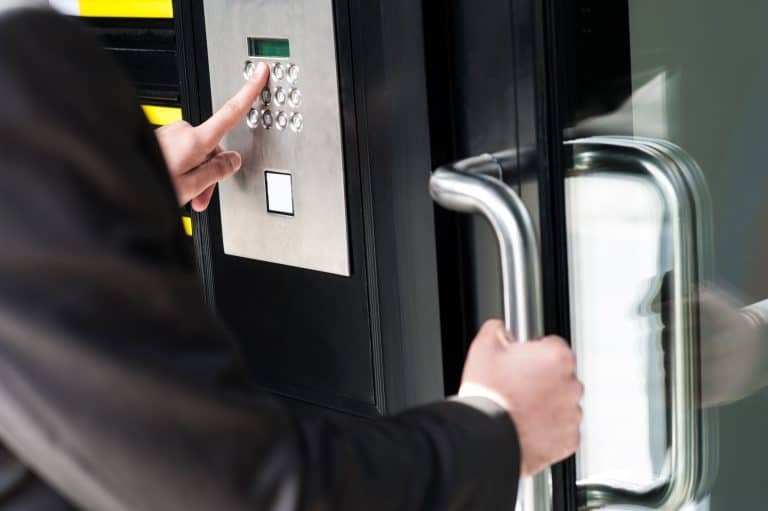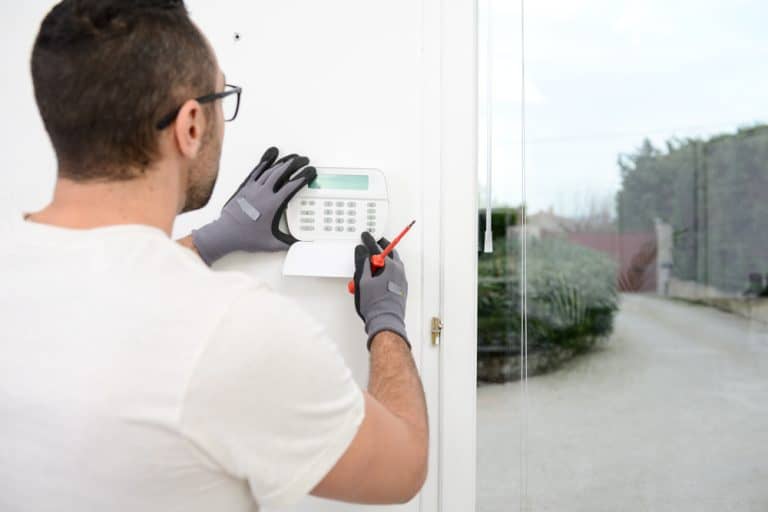
An access control system refers to a security measure that regulates and manages entry to spaces within an organisation. This technology is a combination of hardware and software components used to authenticate and authorise individuals based on their credentials, such as identification cards, biometric data, or passwords. These kinds of systems are important as they have the power to enhance the overall security of your organisation by providing selective access to authorised personnel while restricting entry to unauthorised individuals.
They are also designed to help prevent unauthorised access, protect sensitive information, and mitigate the risk of theft while maintaining a secure environment for employees, assets, and intellectual property. With the right access control systems you are able to fully monitor and track entry and exit activities, facilitating investigations and audits, and providing valuable insights for security management and incident response.
Our access control systems can also be adapted to future growth to help your business scale with ease.




ACCL’s specialised team of access control system installation experts can work on access control projects of any size or scope. Whether you need an access control system installation or access control system upgrade, or are planning on relocating your offices, or you simply wish to downsize, we can create a customised access control system plan to meet your requirements.
There are many reasons why hundreds of businesses in London have trusted ACCL with their access control installation needs. Our team has more than 25 years’ worth of experience in cabling and access control systems and access control installation, and our engineers and technicians are highly trained, skilled, and qualified.
We can manage access control projects of any size or level of complexity, while working to minimise disruption and downtime during installation. If you’re looking for a solution that’s as cost effective as it is functional, we can recommend suitable options appropriate for your business and your unique operations.




ACCL’s access control installation services enable your London business to control who can enter your facilities and offices, or other specific areas of your premises.
Here is what you can expect from our access control installation process:
The first step of our process involves our team performing a free, no obligation consultation on site. We assess your business’s needs during and provide you with a report of our recommendations and findings.
Once we have issued our report, our team will be in touch to schedule a time for access control system installation that is most convenient for you. We work around your business’s schedule to minimise the risk of disruption.
We offer a variety of access control installation services, from single point-of-entry door controllers to sophisticated packages that monitor and cool doors in one or multiple buildings.
If you require these services, our expert team can integrate your access control system with a range of alarms, as well as time and attendance packages.
ACCL provides access control installations to a wide range of businesses and industries throughout London. Our services are provided to offices, venues, stadiums, and educational facilities to provide additional security.
We provide installations to nursery schools, primary schools, secondary schools, colleges and university campuses, all of which can benefit from access control in a number of ways. These systems provide peace of mind and security for educational staff and pupils, and can protect assets from burglary, especially when doors are fitted with access controls that manage who can enter specific areas of a facility.
Access control systems can also be used to manage the attendance and time of staff members and pupils and can help to ensure that you can monitor who requires evacuation from the building in the case of an emergency such as a fire.
There are a few different types of access control systems, each of which offers unique advantages, disadvantages, and applications. They include:
Access control cards are a cost-effective and simple method that allows you to grant staff, contractors, and other personnel access to parts of your premises. Cards can be activated and deactivated at the touch of a button and will work for a single point-of-access system, multi-door system, or multi-site network. These cards can be branded, printed with photo IDs, and even fitted with credit card chips to facilitate transactions at vending machines.
Biometric access control installation uses fingerprint or retinal readers to manage who gains access to your premises. While retina scanning is usually used for high-security facilities, fingerprint systems are more widely used. They can be applied to single point-of-access systems, multiple doors, and multiple sites. Once a user’s fingerprint is scanned, it can be used in similar ways to an access control card.
Proximity fobs enable users to open locked doors without having to present their fobs to a reader. They provide authorised personnel with access to a facility and allow them to exit and will leave an audit trail so that the movements of their users can be recorded and tracked.
Access control systems can benefit the security of your premises in many ways. These are the key benefits of installing an access control system:
Installing an access control system is the best way to prevent unauthorised access to your premises. This helps to ensure the security and protection of your premises, assets, and staff.
ACCL’s access control systems can restrict access to dangerous areas, reducing the likelihood of theft or damage to property. These systems can thereby keep your staff, business assets, and private data safe.
Your access control installation will enable you to effectively manage your site, and tailor access for each member of your staff. You can use your system to grant temporary access to visitors.
Modern access control solutions eliminate the need for physical keys, which are easy to lose or forget. Using a modern system from ACCL improves efficiency and increases the security of your premises while minimising inconvenience.
Installing the right access control solution for your needs can help you to track and audit staff’s movements into, out of, and around your premises.
While our systems are extremely powerful, they are also very simple to manage. This gives you full control over the security of your building without straining your security and IT teams.
Your access control system can be integrated with CCTV, fire alarms, intruder alarms and video entry systems to produce better outcomes. When you integrate your system, any irregular activity will trigger an email or text alert to keep you informed.
The risks of crime, burglary and vandalism are ever-present for businesses operating in London and surrounds. Opting for a Paxton Net2 Access Control System will help you to manage all your security needs while choosing exactly who can gain access to your premises. This system is:
The software used by the Paxton Net2 system is simple to use and comes with manuals and tutorials, minimising training requirements for administrators.
You can access this access control system straight from your personal computer, meaning that you won’t need to invest in additional technology to use the Paxton Net2 system.
You can grant multiple administrators access to the system, enabling more effective security and access control management.
You can add more doors or fobs to the system whenever you need to.
The system enables you to view events in real time and after they occur. Paxton Net2 offers a comprehensive event viewing history and advanced reporting features.
Paxton access control systems do not pose any hidden costs. You can install the software and updates on as many PCs as you wish without paying additional fees.
The system enables you to set specific events during which access should be granted or denied to specific people or all personnel on site. This is ideal for organisations with longer business hours.
The Paxton Net2 Access Control System can also grant temporary access to visitors and contractors at your request.

ACCL also provides specialised ANPR camera installation for all your access control requirements.
ANPR cameras, also known as licence plate recognition cameras or ALPR (Automatic License Plate Recognition) cameras, are fully equipped with specialised technology that allows them to capture images of licence plates on vehicles passing by or parked in specific locations.
The primary purpose of ANPR cameras is to automatically read and analyse licence plate numbers to gather information about vehicles, such as their registration details, owner information, and any relevant data associated with the vehicle’s licence plate. The information obtained from ANPR cameras can be used for various purposes, including law enforcement, traffic management, toll collection, parking enforcement, and tracking of stolen vehicles.
Decision-making: The ANPR system can then perform various actions based on the results, such as sending an alert to law enforcement if a stolen vehicle is detected, logging the data for traffic management or toll collection purposes, or triggering automated actions for parking enforcement.
It’s important to note that the exact functioning of ANPR cameras can vary depending on the specific technology and the purpose they serve. Additionally, the usage of ANPR technology may be subject to various privacy and data protection regulations in different countries or jurisdictions.
Implementing ANPR cameras for access control can significantly enhance the security and efficiency of your business. ANPR cameras offer a seamless and automated approach to managing vehicle access, ensuring only authorised vehicles are granted entry. By capturing and analysing licence plate numbers, ANPR cameras eliminate the need for manual checks or access cards, reducing the risk of human errors and unauthorised access. This technology enables real-time monitoring of incoming and outgoing vehicles, allowing for swift identification of any suspicious or unauthorised vehicles, and facilitating immediate response if needed.






